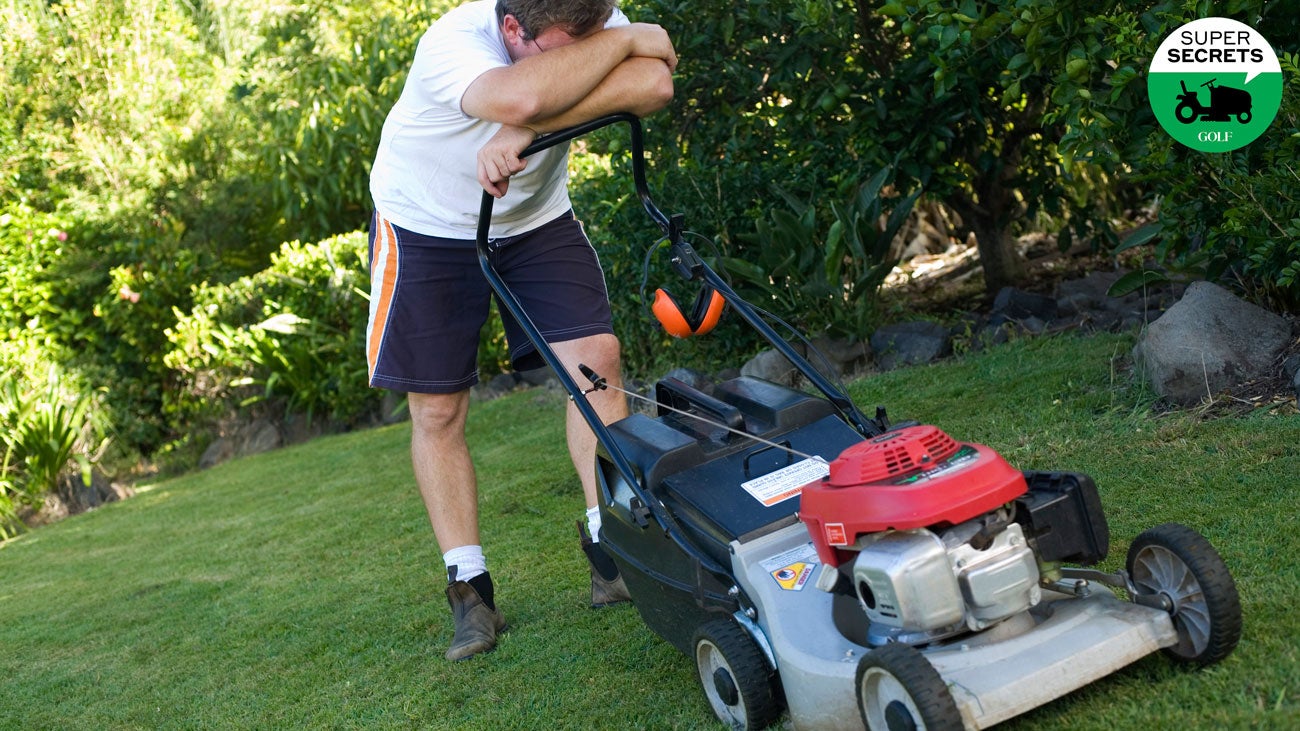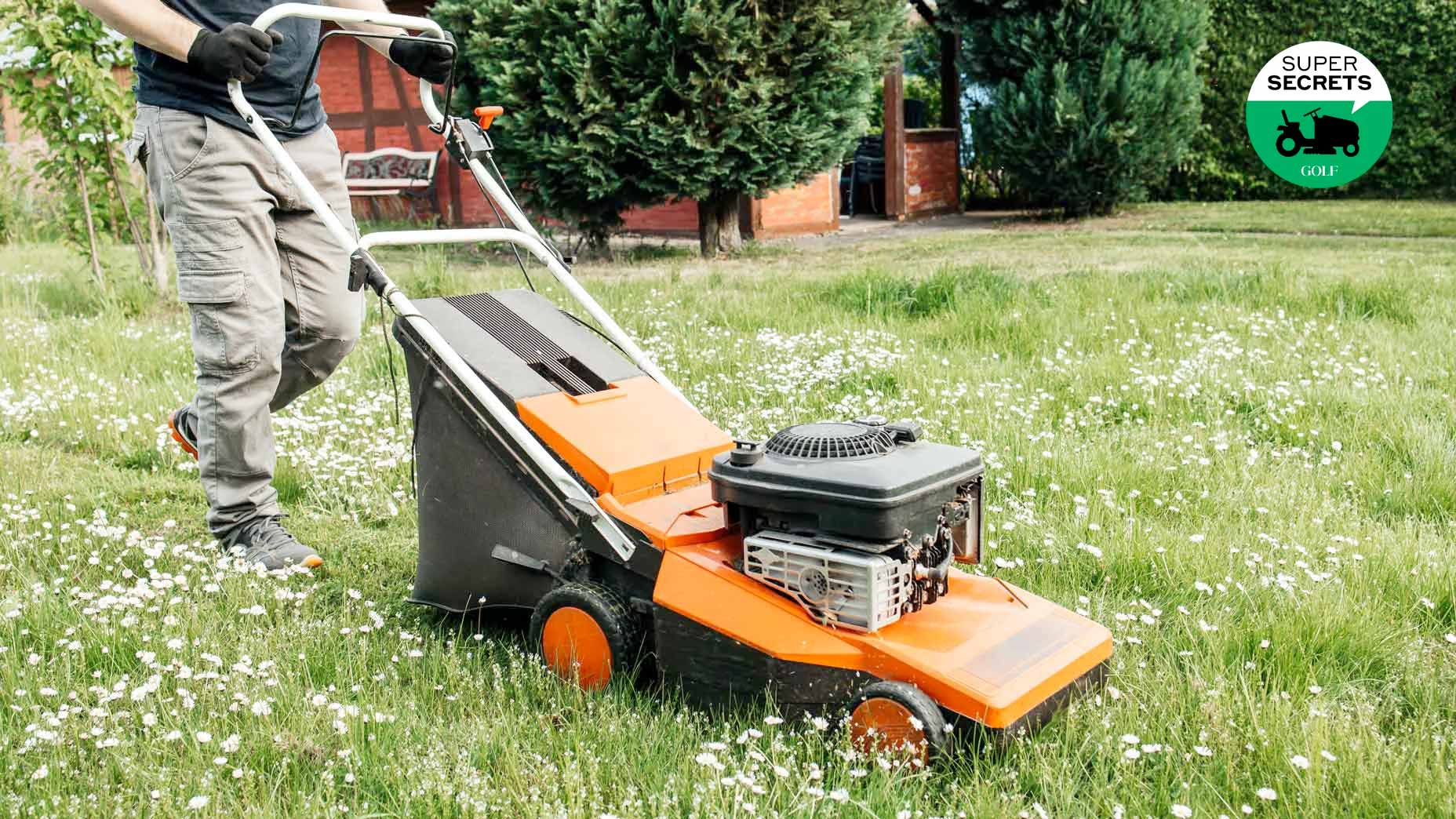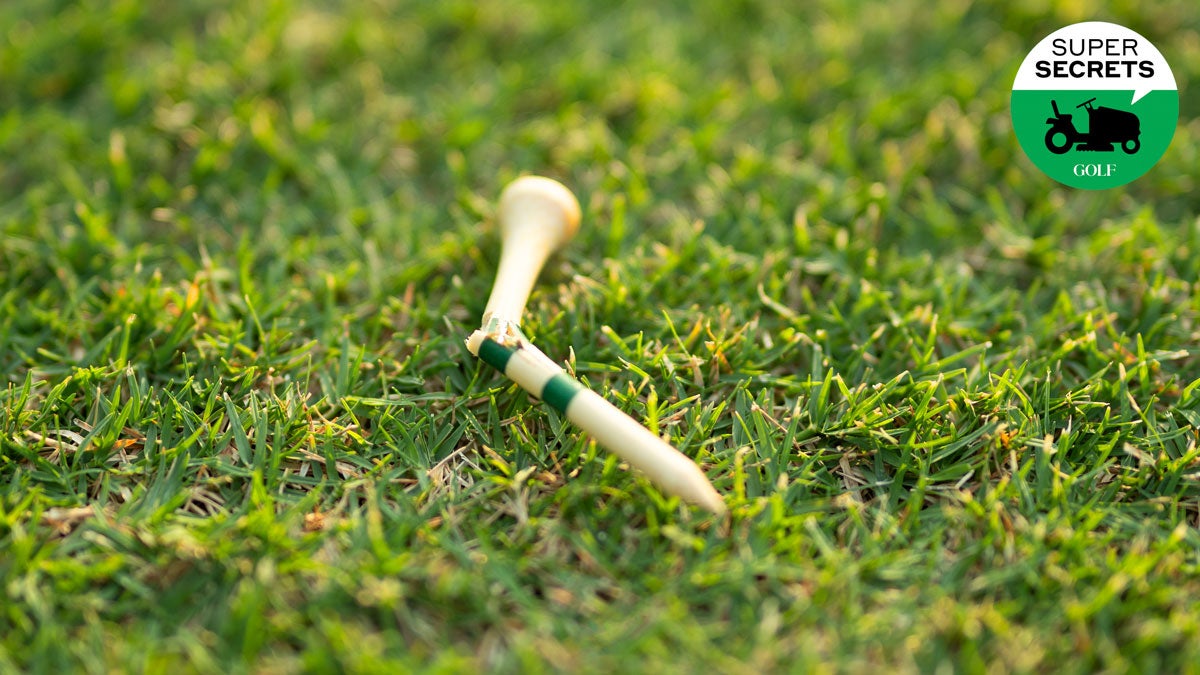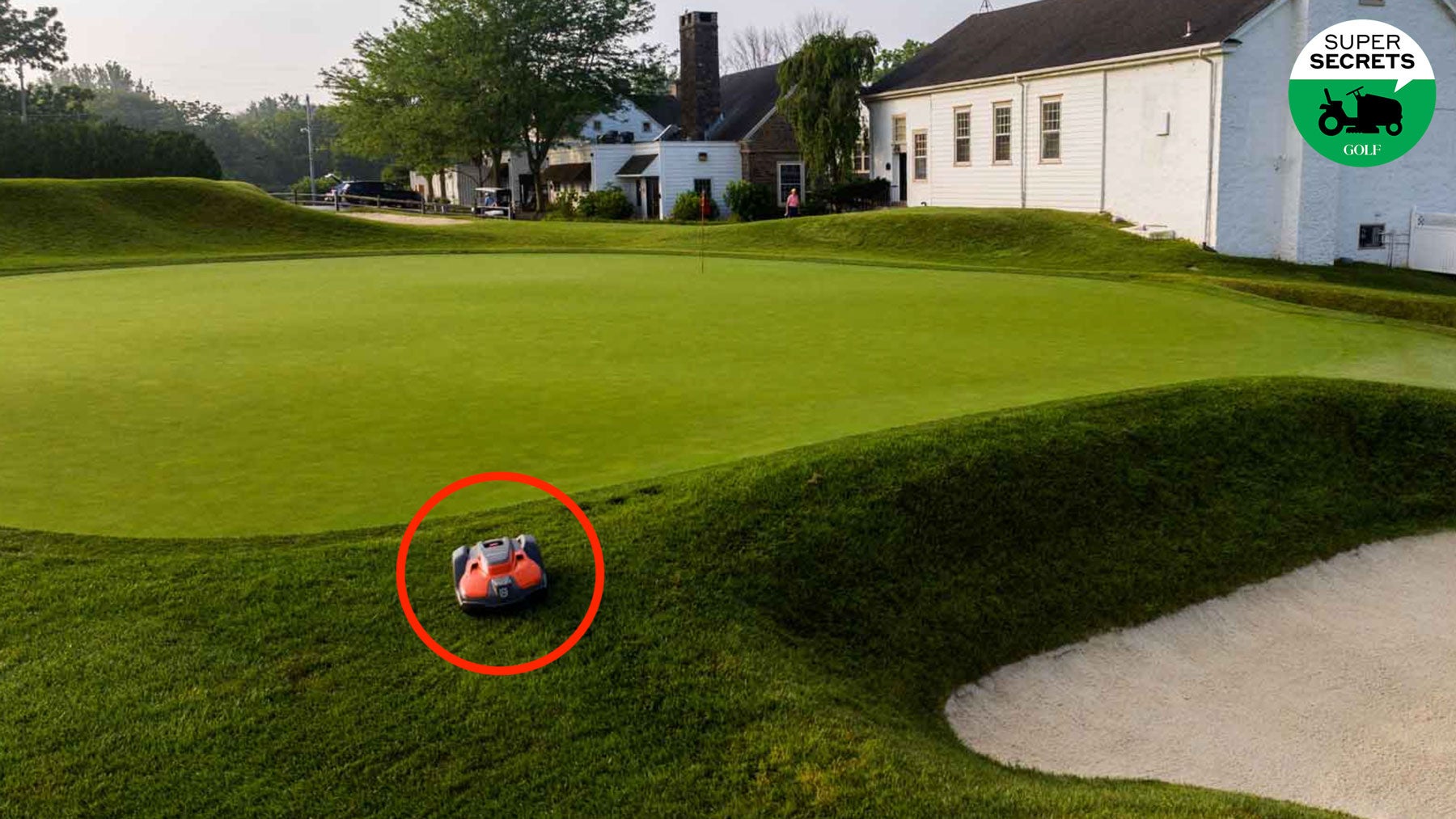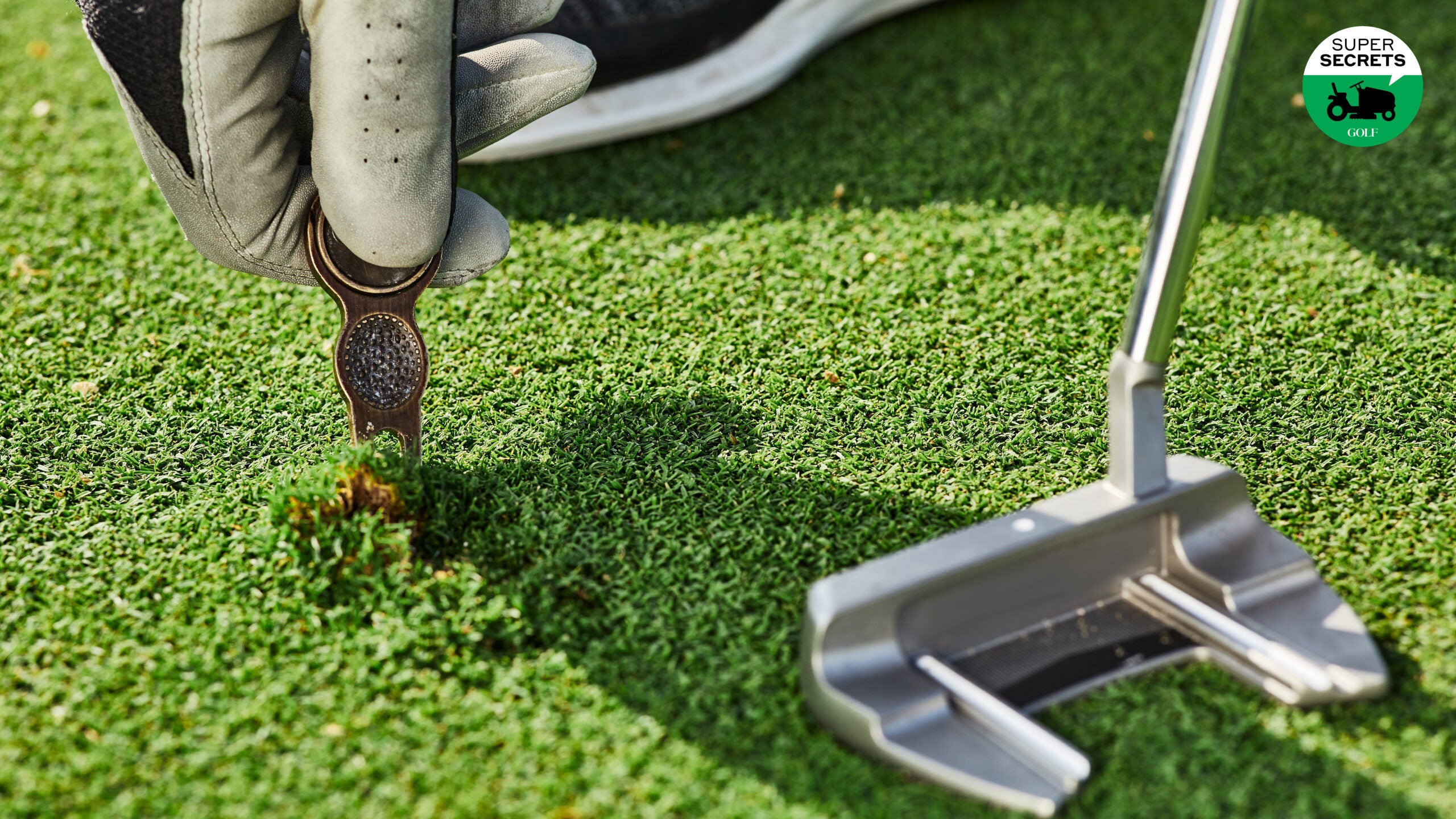Why grinding on your putting can be bad for greens. A superintendent explains

Standing for too long over one putt on a practice green can damage the grass.
Twitter: @dangrieve
This week’s topic was inspired by a tweet about feet — specifically, the damage caused by golfers standing for too long in one spot while practicing their short games:
Confession: we here at Super Secrets were unaware this was an issue. How prevalent is it? How serious is it?
As the superintendent at Legacy Golf Club at Lakewood Ranch and Serenoa Golf Club, in Florida, Mark Patterson is no stranger to the problem.
It’s real, all right.
We asked Patterson, a longtime member of the Golf Course Superintendents Association of America, to walk us through the causes and effects.
Root of the issue
Maybe you’ve seen them: golfers who could be mistaken from a distance for lawn statues, standing in a fixed position as they stroke the same putt or strike the same chip, over and over. On the one hand, you’ve got to respect their grinding. But what’s good for their touch can be bad for the grass. Standing on turf for prolonged periods can leave it bruised and discolored. Not dead, but damaged.
The seriousness of the injury depends on a range of factors, including the type of turf and the tightness of the mow (the short-cut grass on greens is the most delicate of all). But, Patterson says, “a lot also depends on the weight of the human being.”
How long can grass endure a stand-still stomping before it suffers visual damage? That, too, varies. But Patterson says that in his experience, “10 minutes or more is where you start running into issues.”
Eventually, the grass heals, but that can sometimes take weeks, or longer.
Contemporary problem?
Ben Hogan was an outlier in his era, with a practice regimen that was borderline religious. His approach would not be as unusual today. As Patterson notes, “the face of the game has changed,” a transformation that he says has grown increasingly apparent to him in the past eight to 10 years. Not just more players, but more serious players, with practice routines that rival the intensity of Hogan’s.
At his course, for instance, Patterson says, a local instructor employs what he calls a “22-minute drill,” which is exactly that. His students stand in one place for 22 minutes, hitting the same putt. Luckily, that instructor is conscientious. He cuts out material from gardening knee pads and lays those patches down for his students to stand on. That helps protect the grass. Towels also work as a buffer, Patterson says, albeit not as well as the more porous knee-pad material. “But almost anything you put down is better than nothing,” he says.
Patterson himself takes an additional precaution. He posts signs around his practice area, alerting golfers to the problems they can cause.
Such as:
“Please limit your practice time. Those little blades don’t need your big feet standing on them all day.”
And: “This green is closed. Sometimes the grass needs to rest, just like you. Go home and take it easy.”
Not everyone listens.
Depressing depressions
Stand in one place for too long, and you don’t just bruise the grass. You also leave depressions in the turf. When mowers pass over that uneven terrain, they often wind up scalping the grass. Patterson says you can see evidence of this in the photo posted in the tweet above.
Can it happen at home?
Many homeowners stand at their backyard grills for longer than they stand over their putts. But that’s not a serious worry, Patterson says. The grass on a typical lawn is much longer than the tight-mown grass of a green or short-game area, and thus much less susceptible to damage. It’s still grass. It can get bruised and discolored, as you’ve probably noticed if you’ve ever left lawn furniture on it for a long period of time. You can always take precautions. It depends on how fanatical you are about your yard.



